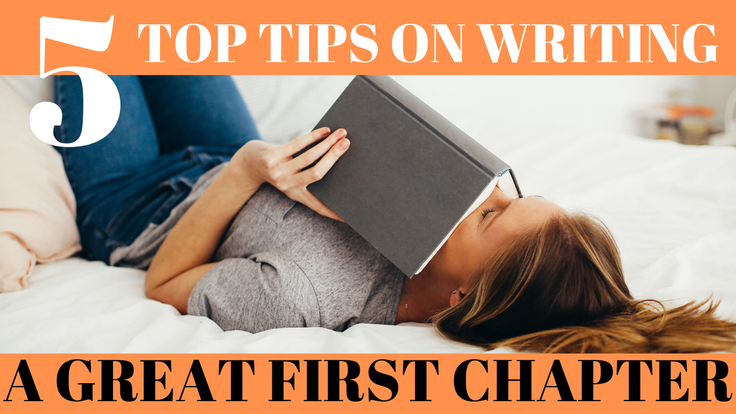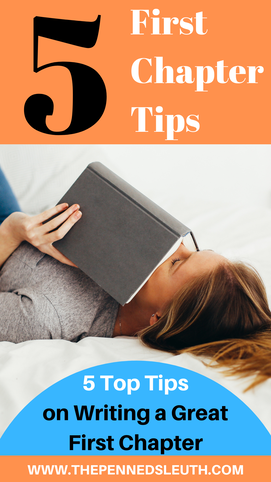Latest Writing Video! |
|
You’ve experienced it before. Whether you read the first chapter or someone else did, the sense of starting and finishing the novel wasn’t there. You need to grip your reader and you’re only going to do that when you write a great first chapter. Here are five great tips to help you write the first chapter that draws your reader in. 1. Jump into the Deep EndMost first chapters you read today involve introducing a character and building up towards something interesting, be it an action scene or something suspenseful that interests the reader. However, introducing your character straight off the bat is one of the great flaws in writing the first chapter. That doesn’t mean you shouldn’t, but if you plan to, it should be in the middle of an interesting scene. You need to grip the reader by giving them something interesting. An action scene is one thing. Nothing helps set the mood of your novel than a scene that involves conflict, be it Hollywood or dramatic. It is then that the reader wants to find out more. Who are these people and why is there a conflict? You are then, and quite cleverly I might add, drawing the reader into your novel. In the very first chapter you are giving them interesting characters, you’re establishing some personality traits through their actions and so on. 2. Use Engaging DialogueAdding to the brilliance of these scenes is essential. As fantastic as it is to introduce your characters through narration, or through first person writing in establishing some face-value traits, dialogue, is what builds the characters in the reader's mind. You are showing your reader how they speak and therefore you can create more enticing conflict and back-and-forth conversations. What is more, readers enjoy reading dialogue. An imaginative reader can imagine the dialogue, how the characters speak. You have already set the scene and this dialogue can also give the reader some information on your book. The information you give can be on the characters themselves. The kinds of words they use reflect their outward personality, given the reader a solid impression on the character. You can add to this information later when you describe the internal personality. Not only can you give information on the characters, but the world as well. Personally, that is something I recommend more than character descriptions. Building the world immerses your reader, already drawing them in. It is difficult to draw people in with characters. 3. Don't Give Too Much InformationNow that we have an interesting chapter going, let’s not overdose on some of the qualities. You don’t want to make the first chapter the best chapter. To ensure this, don’t give too much information on anything in your novel. Describing the world is great, but giving all the details on your world will only bore them and soon they will forget the world if you have nothing to add to it. Keep that wonder within your reader and that curiosity going. In addition to that, the characters needs to feel fairly two-dimensional in the beginning. Character development is another essential in any novel. The characters change and grow as the plot develops as well. You simply can’t have a characters that seem so complex in the beginning. Why should your reader care about your character’s emotional problems? Your reader has just met your character, so giving them too much insight on how they think and their darkest fears and desires is only suffocating. Much like meeting someone in real life, you build a relationship before you reveal such information. Thus, you use this chapter to introduce the character and try to make a good impression. 4. Hint Towards Grander ChaptersMore advice on what to include; hints towards something greater. Mention the antagonist or hint at a greater enemy. You don’t need to describe the end goal of your characters or how the final chapter will go, but your reader needs to know that the first chapter isn’t the highlight of your novel. Some advice I have given is that if you want to write something memorable, you need to write from the end to the beginning. If you’re going to end your novel with distraught characters, celebrating a victory or mourning a loss, you need to work back from there. What leads the characters to this final conflict? What developments in characters make any losses more emotional? Why is this not a complete victory? These questions will help you plan grander and more enjoyable chapters for your reader to sink their teeth in. Some juicy literature and exciting developments are important. With that in mind, the amount of development in your first chapter should be minimal. Calling back to the last tip, don’t go too in-depth straight away. Your reader is just settling into your book, take it easy and soon they will want more, reading further. 5. Include Something DifferentYour first chapter is starting to leave an impact on your readers. The characters are interesting, the world is fascinating. Some questions are being asked by the reader and they are ready to read further to answer them. However, if you want to take this first chapter to an even higher level, you will need to do something different. What separates your book from any other of its genre? Show this feature off. Recently I started a novel which made perfect use of this advice, Red Moon by Alan R. Without spoiling the book and it’s characters, the first chapter read like a medieval fantasy. It was only by the end of the chapter I was surprised to find that it was all a simulation, the characters being avatars controlled by modern people. I’m not saying this hasn’t been done before, I’m looking at you Ready Player One, but it is interesting and it is brilliant to include this in the first chapter. It left me asking questions and I wanted to read further. You will need to find something different about your novel, something surprising and then end your chapter with it. Your readers will be invested, you can count on that! BONUSThank you for reading through the whole article and as a token of thanks, I would like to offer you a FREE WRITING COURSE. To claim your FREE course, click here. This course is yours for you to enjoy and watch anytime! PS: You get a certificate for finishing the course as well! If you wish to join receive more free courses and discounts, join the WRITERS GROUP, and be kept up-to-date with all the bonus content. Pin for Later!
0 Comments
Leave a Reply. |







